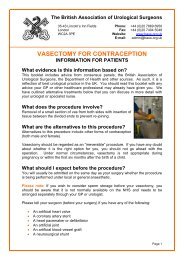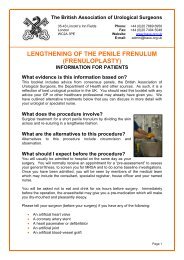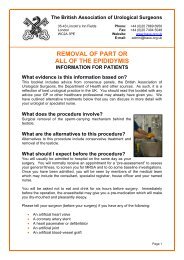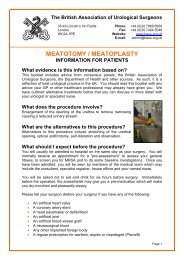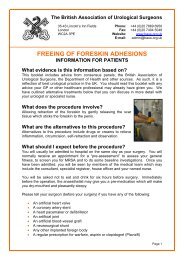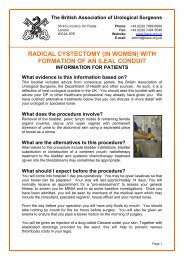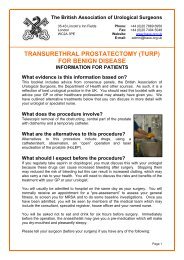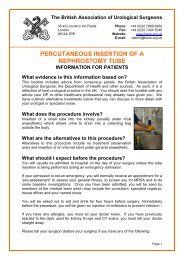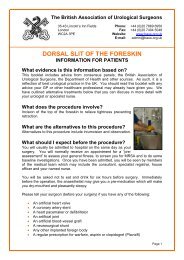MDT (multi-disciplinary team) guidance for managing prostate cancer
MDT (multi-disciplinary team) guidance for managing prostate cancer
MDT (multi-disciplinary team) guidance for managing prostate cancer
You also want an ePaper? Increase the reach of your titles
YUMPU automatically turns print PDFs into web optimized ePapers that Google loves.
Approach to the Patient<br />
Key points <strong>for</strong> discussion with the patient<br />
• Survival prognosis?<br />
• Treatment options?<br />
• Treatment side-effects?<br />
• Impact on quality of life?<br />
• Importance of:<br />
o Sexual function?<br />
o Urinary function?<br />
o Bowel function?<br />
o Physical strength, energy?<br />
o Level of activity?<br />
o Accessibility to prescribed drugs?<br />
o Psychosocial impact on them and their family?<br />
• Family history?<br />
• Clinical trials?<br />
The patient’s expectations<br />
The patient should have the right to discuss their treatment with<br />
appropriately trained members of the <strong>MDT</strong><br />
• After a diagnosis of <strong>prostate</strong> <strong>cancer</strong>, most men will want to have some involvement in the<br />
decisions concerning their care. The following aspects have been found to be important: 4<br />
o Honesty about the severity of the <strong>cancer</strong> and their prognosis<br />
o Discussion of the best treatment options<br />
o The clinician being up-to-date on ongoing and recent research<br />
o Disclosing all treatment options<br />
o How <strong>cancer</strong> may affect their daily functioning<br />
• It is essential that the patient and healthcare professionals discuss the likelihood of adverse<br />
events associated with each treatment option and implications <strong>for</strong> their future lifestyle when<br />
determining management strategies.<br />
• The patient and his partner, family and/or other carers should be fully in<strong>for</strong>med about care and<br />
treatment options and there<strong>for</strong>e able to make appropriate decisions based upon the choices<br />
offered by their healthcare professionals. For example, the choice between radical treatment and<br />
active surveillance may be influenced by a patient’s desire to retain sexual activity, physical energy<br />
and quality of life.<br />
• Patients should be in<strong>for</strong>med and advised regarding the available treatment options and the<br />
potential effects of these on their lifestyle and quality of life.<br />
11



